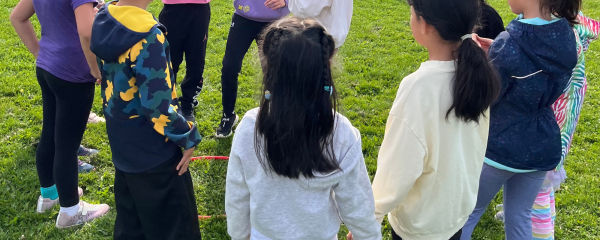Curriculum Expectations
7.1, 8.1, 8.3
See the Kindergarten Program 2016 for details on the specific expectations.
Activity Learning Goals
By the end of the activity children will be able to:
- participate actively in creative movement activities
- demonstrate spatial awareness
- demonstrate control of large muscles without equipment
Equipment
- Music
- Audio equipment
- Pictures of body parts
-
Safety
Inspect activity area for safe traction and eliminate potential hazards. Clearly outline the boundaries for the activity making sure there is a safe distance between the activity area and the furniture/walls. Remind children to be cautious when moving, and to be aware of personal space.
Assessment Opportunity
EL-K Team observation of children’s demonstrated application of active participation, spatial awareness and large muscle control can be recorded on the Anecdotal Recording Chart.
Body Awareness Action
- Place pictures of body parts on the wall at different stations and divide the children into groups of three.
- Review methods of changing or rotating from one station to the next.
- Play any appropriate upbeat music. At each station, children move around the station area to the music, leading with the body part that matches the sign.
Music Moves
Play a variety of kinds of music (pop, jazz, folk, rock, classical). Children respond and move the way the music makes them feel. Pretend to not be able to hear the music and ask children to show you how the music sounds by moving their bodies.
Notes to EL-K Team
- Consider holding up body part cards one at a time for children to see and encourage children to move that body part until the card changes.
- Use any music that children can listen to and respond by actions.
- For variety, use a tambourine, a drum, shakers and bells if available.
- Reinforce stopping immediately when the music stops.
- Remind children to move their body in control in their personal space thereby reinforcing spatial awareness concept.
Connection Questions to Expand and Enhance Play
- Why is it important to move safely in your personal space?
- How many different body parts can you move to the music?
- How does the speed of the music change the types of movements you perform?


